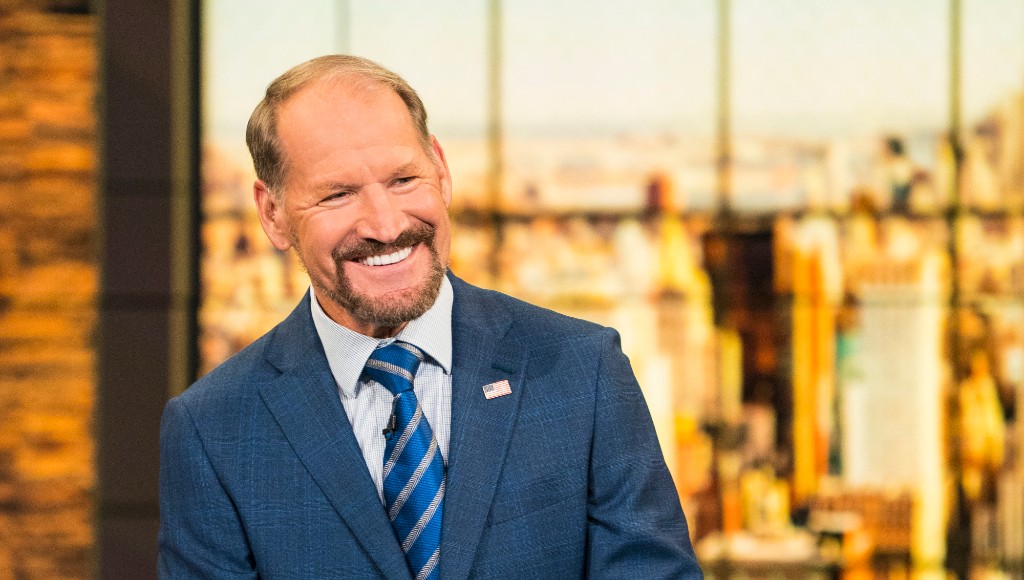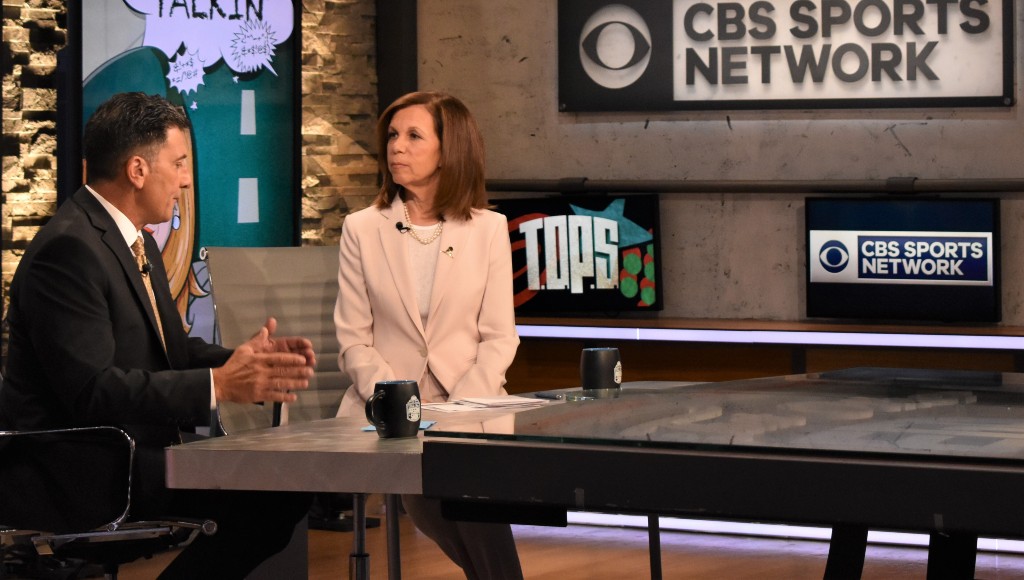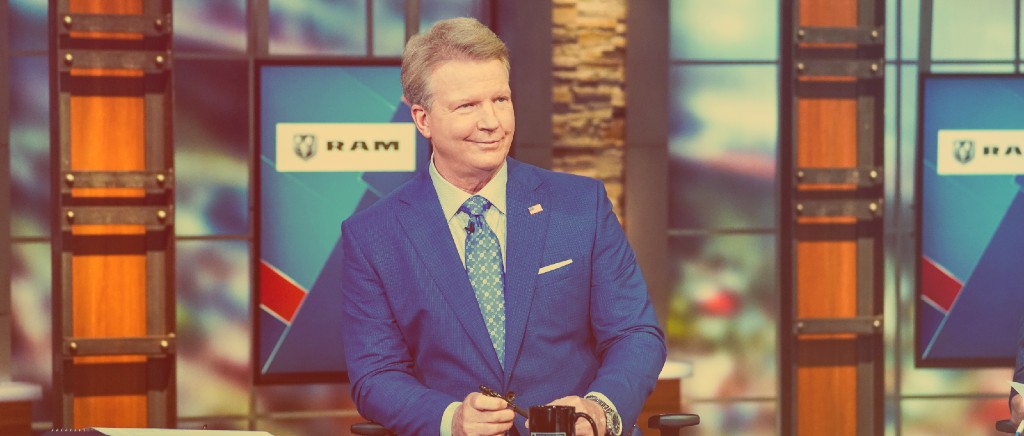Super Bowl LV will pit the reigning champion Kansas City Chiefs against the Buccaneers in their home stadium in Tampa, with kickoff scheduled for 6:30 p.m. ET. CBS’ coverage of the game will begin at 11:30 a.m. ET as they go wall-to-wall with That Other Pregame Show and The Super Bowl Today right up until kick.
Over the course of seven hours of pregame coverage, they’ll try to dive into every possible angle on what we’ll see in the game that night. The five members of the CBS crew with Super Bowl experience will lean on that to guide their discussion. Bill Cowher, Phil Simms, London Fletcher, Amy Trask, and Gene Steratore give CBS a view into the Super Bowl experience from just about every viewpoint, with players who have won a Super Bowl on offense and defense, a coach who won and lost one, a former Super Bowl executive, and a former Super Bowl referee.
Over the past week, Uproxx Sports has gotten the chance to talk with those five about those experiences, with each sharing a favorite Super Bowl memory and how they plan to use that to guide how they will look at Chiefs-Bucs on Sunday.
Simms and Fletcher both can’t help but look at the defenses as the key in this one, as each offense is packed with talent — Simms noted they’re effectively All-Star teams at the quarterback and skill positions. Simms wants to see which team can dictate their style of play.
“Tampa Bay, they are a power team on both sides of the ball,” Simms says. “They can play that way and they have tremendous size. You know, we always just talk about the skill, but sooner or later it comes down to power, too, and Tampa Bay’s offensive line is powerful, I think their defensive line’s powerful. Now, when I look at Kansas City, it’s different. Offense, man, it’s movement, it’s everything to disguise and help their offensive line out, but they do have power on the defensive side. They have great size, and they have a tremendous coach. And, you know, they’re so aggressive. That used to be bad, but by the time last year about midway through the season, their aggressive defense became part of who they were and these cover guys got better. And look, they would not have won last year’s Super Bowl, I don’t think, if they didn’t have Steve Spagnuolo as a defensive coordinator.”
Fletcher expects the Chiefs to look to make Tom Brady work the ball down the field through the air, being aggressive in looking to take away the run so the Bucs can’t chew clock and keep Patrick Mahomes on the sidelines, while also being keenly aware of the Bucs’ big play threat as well. When it’s the Bucs’ turn to play defense, he anticipates Todd Bowles to dial it up with pressure to try and keep Mahomes from extending plays while leaning on Devin White’s speed to chase down the underneath stuff.
“Because the Chiefs are such an explosive offense, if you’re going to allow Patrick Mahomes to have time to get outside the pocket to create plays — which he’s as good as anybody in the league at — when he gets outside the pocket and buys time it’s hard for a defense or for a defender to cover a Tyreek Hill or Travis Kelce, or some of the other playmakers four and five and six seconds,” Fletcher says. “And when you look at the Tampa Bay Buccaneers, they love to bring pressure, I don’t think they’re gonna vary much from what they’ve done in the past in terms of blitzing and trying to get pressure on the quarterback. The Chiefs are going to be without their starting left tackle, so I’m sure they’ll try to scheme a way to take advantage of that. So going into the game, I believe that Todd Bowles is gonna dial up pressure and he may dial it up even more than he has in the past.”

From a coaching perspective, what stands out to Bill Cowher is the way these coaching staffs have adapted to their personnel and maximized the talent they have on both sides of the ball to shape their identities. That aggression from Kansas City’s defense takes advantage of their speed, while the Bucs are built to dominate in the front seven, and Bowles has leaned on that group to do damage and set the tone.
Offensively, Byron Leftwich and Bruce Arians needed to adapt this season to Brady, who wants to throw underneath more than Jameis Winston did, and they’ve found the balance between that and the deep passes they love to their dynamic pass catchers. On the other side, Eric Bieniemy and Andy Reid have embraced their generational quarterback’s gifts, and allowed Mahomes the freedom to explore his abilities fully while also understanding how to balance their big play ability with dominating possession, something that is easier with an all-everything tight end in Kelce.
With those two offenses being as talented as they are, Cowher expects a pair of factors to decide this game.
“I love that mantra that they’re both going to have went into this,” Cowher says. “It’s going to be move, counter move. Shot, take a shot, and can you respond. And so I always think it comes down to games like this, certainly the turnovers, we always talk about that, but to me, who can finish drives. I just go back and just look at the last few games. Tampa Bay, they stopped Kansas City in the red zone three different times. They were 0-for-3 in red zone. They stopped Aaron Rodgers three times and made them kick a field goal or at least make that decision and kick the field. So defenses are gonna give, they’re gonna take. But the ability to finish drives, the ability to hold people to field goals, to me is the most interesting.”
On the field, Trask is most interested to see how the Chiefs handle the excellent pass rush of the Bucs without starting left tackle Eric Fischer. Off of it, the former Raiders executive took stock of how these front offices assembled championship rosters. She notes how the two teams are constructed from the top down, with the great talent on the field that has sacrificed at times for the greater good — Mahomes, for example, made sure that the Chiefs also got an extension done with All-Pro defensive lineman Chris Jones last offseason as they were working on a deal with him, too.
She also, like Cowher, highlighted the coaching staffs and how they’ve pulled all of it together to create two teams with unique identities, but both following the key tenants of successful team-building.
“Look, the word ‘team’ is significant,” Trask says. “And you need to have a team that is more than an accumulation of individuals. Yes, it absolutely matters who is on the field and who is on that roster. But what we see with both of these teams is tremendous coaching. And what I think the best coaches do is they best position their players to be their best.
“So it is the job of the front office to bring in good players,” Trask continues. “And it is the job of the front office to also bring in the best coaching staff they can. And I believe the four most important words, not only with respect to a football team, and not only with respect to winning and building the environment you referenced, but all businesses are communicate, cooperate, collaborate, and coordinate. And if you are not as an organization, from top to bottom and throughout the organization, communicating, cooperating, collaborating, and coordinating, you’re not going to be your best.”

From a refereeing perspective, the task for Carl Cheffers and his crew is going to be very different depending on which offense is on the field. As Steratore explained, the points of emphasis and things the officials have to be paying attention to are very different because of the two different offensive styles, but he expects there to be a lot of work and pressure on the downfield officials.
“Brady is a very traditional pocket type quarterback, he very rarely goes outside of the pocket,” Steratore says. “So illegal contact and the fouls that pertain to the quarterback being in the pocket apply more there. Where Patrick Mahomes, with an RPO, which shows you run, it’s pass, he scrambles, is he in the pocket is he not, and that’s just breaking down, you know, the passing game a little. For officials that are working the receivers that you go through that step process, then to look back to make sure he is in the pocket and the ball is not gone, or it’s not a run. So many of those things, and then in this game, we have tight ends on both sides of the ball that can really do amazing things. And when tight ends can pressure and push the middle of the field, and with the speed that they both have on the outsides, the three officials that are downfield, that’ll work the majority of the deeper routes, they’ll be pressed into different types of coverages all day.”







